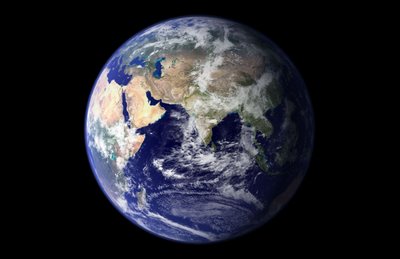By H. JOSEF HEBERT
Associated Press
The world's beaches and shores are anything but pristine. Volunteers scoured 33,000 miles of shoreline worldwide and found 6 million pounds of debris from cigarette butts and food wrappers to abandoned fishing lines and plastic bags that threaten seabirds and marine mammals.
A report by the Ocean Conservancy, to be released Wednesday, catalogues nearly 7.2 million items that were collected by volunteers on a single day last September as they combed beaches and rocky shorelines in 76 countries from Bahrain to Bangladesh and in 45 states from southern California to the rocky coast of Maine.
"This is a snapshot of one day, one moment in time, but it serves as a powerful reminder of our carelessness and how our disparate and random actions actually have a collective and global impact," Vikki Spruill, president of the Ocean Conservancy said in an interview.
The 378,000 volunteers on average collected 182 pounds of trash for every mile of shoreline, both ocean coastlines and beaches on inland lakes and streams, providing a "global snapshot of the ocean trash problem."
The most extensive cleanup was in the United States where 190,000 volunteers covered 10,110 miles — about a third of the worldwide total — and picked up 3.9 million pounds of debris on a single Saturday last September, according to the report.
That's 390 pounds of trash per mile, among the highest rates of any country, although the high number also reflects the large number of U.S. volunteers who took part, said Spruill. By comparison, volunteers in neighboring Canada collected 74 pounds per mile and those in Mexico, 157 pounds per mile, said the report. About 65 pounds of trash were collected per mile in China and 46 pounds per mile in New Zealand. Volunteers covered one mile in Bahrain and found 300 pounds of trash.
But Spruill said the volume of trash collected tells only part of the story. It's the items that are found that tells us about the behavior of people enjoying the beaches and coastlines of the world.
"It represents a general carelessness we have. ... We're the bad guys. Trash doesn't fall from the sky. It actually falls from our hands," said Spruill.
The debris ranges from the relatively harmless, although annoying and an eyesore, to items that annually result in the death of hundreds of thousands of seabirds and marine mammals caught in abandoned fishing lines and netting.
A third of the items found came from smokers.
The volunteers collected and cataloged nearly 2.3 million cigarette butts, filters and cigar tips. And they found 587,827 bags; more than 1.7 million food wrappers, containers, lids, cups, plates and eating utensils; and nearly 1.2 million bottles and beverage cans.
Divers also scoured waters offshore, collecting about 160,000 pounds of debris from cigarette waste and food containers to more threatening items: abandoned fishing lines, plastic bags, rope, fishing nets and abandoned crab and lobster traps.
The International Coastal Cleanup also focused attention on the damage these items can do, said program sponsors.
The volunteers came across 81 birds, 63 fish, 49 invertebrates, 30 mammals and 11 reptiles and one amphibian that all had become entangled in various debris, most often discarded fishing line, rope or plastic bags, according to the report.
Among other items that entangle animals and birds were balloon ribbons and strings, building material, vehicle tires, wire, and beverage six-pack holders.
In all, 57 percent of the trash was related to shoreline recreational activities, 33 percent from smoking-related activities, 6.3 percent from fishing or waterway activities, 2 percent from dumping and less than 1 percent from medical and personal hygiene activities, said the report.
 RSS
RSS

